Playing is learning. This probably isn’t news to the people who read this blog, but it bears repeating because it’s easy to forget. Kids play all the time at home, and it can become something that happens in the background that we don’t think about. At the library, we place a priority on play. We make it a point to invite kids and grownups to play together. If asked, I could go on and on about the ways that pretend play, in particular, helps kids develop early literacy skills, but my goal with this post is to show off some of the fun pretend play themes I’ve had at my library over the last year. So here goes! :)
Narrative Skills:
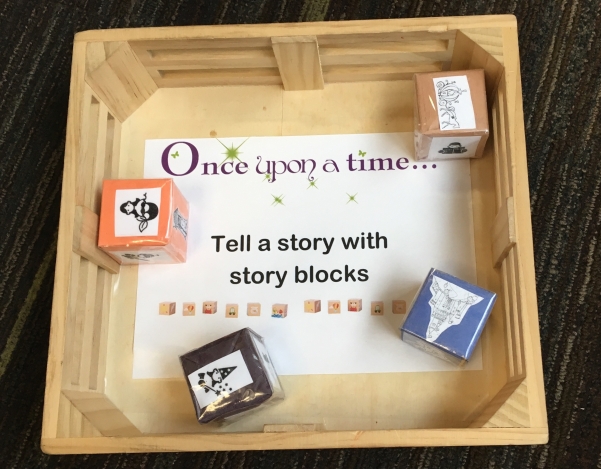 We celebrated Picture Book Month with an Enchanted Forest theme. Kids could dress up as fairy tale characters or use the stuffed animals to tell their own version of familiar stories. The story cubes could spark a creative retelling that mixes up all sorts of fairy tale elements. I made these myself by covering some wooden blocks with construction paper and tape, but you can also buy story cubes or story sticks aimed at preschoolers to encourage storytelling.
We celebrated Picture Book Month with an Enchanted Forest theme. Kids could dress up as fairy tale characters or use the stuffed animals to tell their own version of familiar stories. The story cubes could spark a creative retelling that mixes up all sorts of fairy tale elements. I made these myself by covering some wooden blocks with construction paper and tape, but you can also buy story cubes or story sticks aimed at preschoolers to encourage storytelling.
Social Skills:
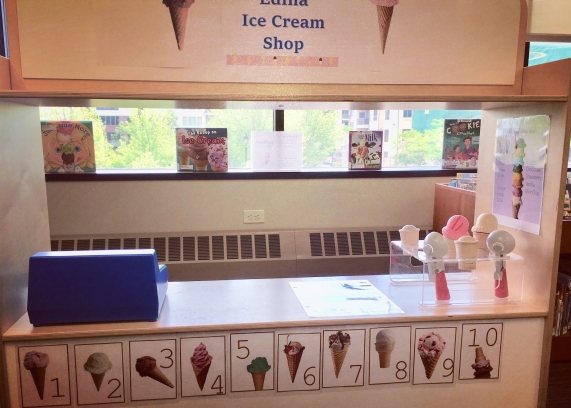 In the grocery store, the ice cream shop, and other community based play spaces, kids can imagine themselves in various roles. They can take turns being proprietor or a customer, seeing the interactions from different roles and developing empathy for experiences outside of their own.
In the grocery store, the ice cream shop, and other community based play spaces, kids can imagine themselves in various roles. They can take turns being proprietor or a customer, seeing the interactions from different roles and developing empathy for experiences outside of their own.
Vocabulary:
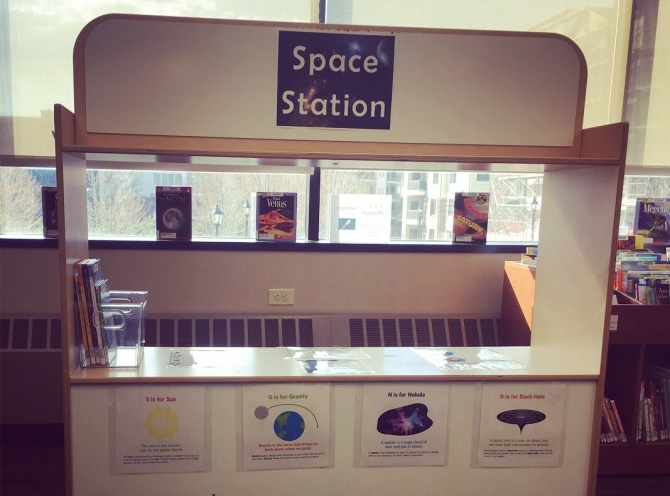 In the Fix It Shop, we named the tools. In the Sense Lab, we encouraged the use of descriptive language as kids explored the world with their senses. Our Space Station offered various science words. Don’t underestimate kids’ willingness to learn complex vocabulary if they are interested in the topic!
In the Fix It Shop, we named the tools. In the Sense Lab, we encouraged the use of descriptive language as kids explored the world with their senses. Our Space Station offered various science words. Don’t underestimate kids’ willingness to learn complex vocabulary if they are interested in the topic!
Print Awareness:
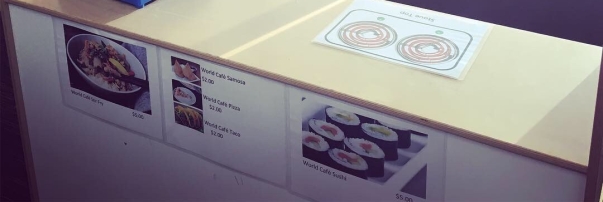 In the community based play spaces (World Café, Ice Cream Shop, etc), the menus and other signage are examples of the way that we interact with printed words as we life our lives. Understanding just how much we rely on printed language is an important part of learning to read.
In the community based play spaces (World Café, Ice Cream Shop, etc), the menus and other signage are examples of the way that we interact with printed words as we life our lives. Understanding just how much we rely on printed language is an important part of learning to read.
Print Motivation:
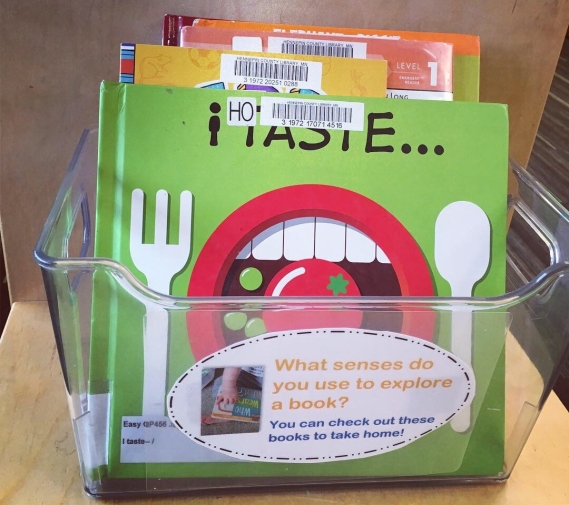 Kids and caregivers are always encouraged to learn more about the topics with books. Learning to read is hard work, and if kids are interested in the topics they are reading about, they be much more motivated.
Kids and caregivers are always encouraged to learn more about the topics with books. Learning to read is hard work, and if kids are interested in the topics they are reading about, they be much more motivated.
Letter Knowledge:
 Exploring shapes and sorting objects based on likes and differences is a first step to letter knowledge. Our grocery store featured pictures of letters made out of food, and the Sense Lab encouraged sorting objects based on how they feel.
Exploring shapes and sorting objects based on likes and differences is a first step to letter knowledge. Our grocery store featured pictures of letters made out of food, and the Sense Lab encouraged sorting objects based on how they feel.
Phonological Awareness:
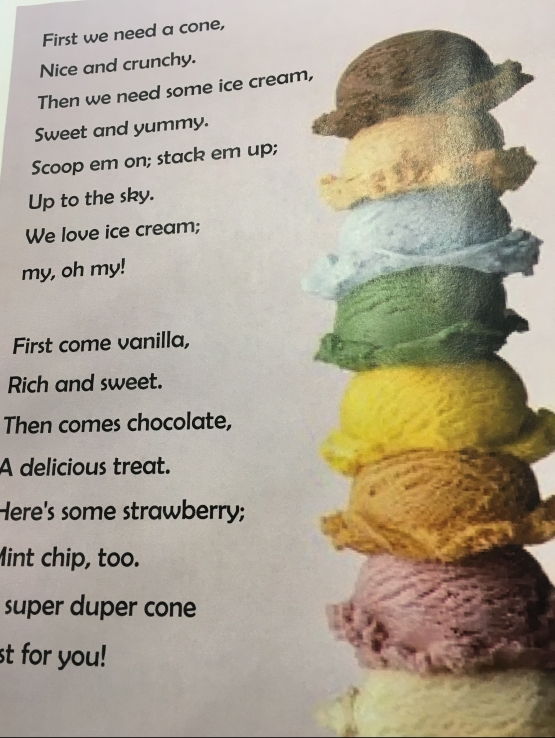 Singing songs and chanting rhymes help kids hear the sounds of words more clearly than in regular speech. We included the words to a rhyme in our Ice Cream Shop and our Space Station to add an opportunity to build phonological awareness while at play.
Singing songs and chanting rhymes help kids hear the sounds of words more clearly than in regular speech. We included the words to a rhyme in our Ice Cream Shop and our Space Station to add an opportunity to build phonological awareness while at play.
Stay tuned for an upcoming post about my library’s pretend play space relates to early science skills!


 Speaking of wordplay and laugh-out-loud humor,
Speaking of wordplay and laugh-out-loud humor, 







